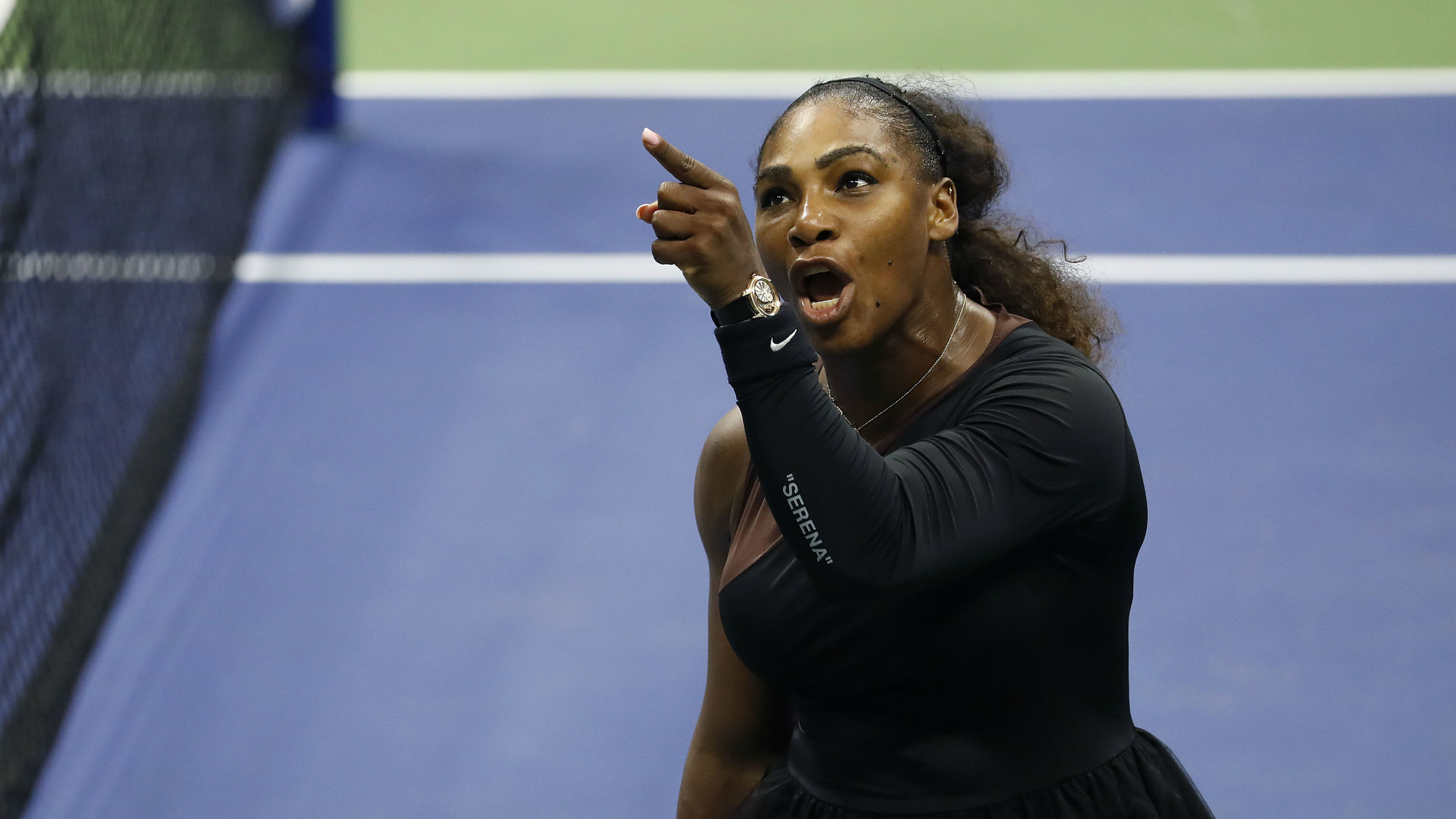Serena Williams, Mark Knight, and Artistic Responsibility
Serena Williams argues with umpire Carlos Ramos at the U.S. Open on September 8th (source)
“I don’t know how you draw an African American person by not making them look like an African American person.”
- Mark Knight, Editorial Cartoonist, The Herald Sun
Tennis superstar Serena Williams drew international attention when she accused umpire Carlos Ramos of being a "thief" in the 2018 U.S. Open. Days later, Australian cartoonist Mark Knight depicted her reaction to receiving fines for coaching and racquet and verbal abuse in the Herald Sun, replete with racist iconography. Knight, regardless of his intention, used aspects of visual imperialism from the Jim Crow era that perpetuate Black people as a lesser race—but it wasn't the first time the cartoonist has done so.
Mark Knight’s cartoon depicting Serena Williams appearing in the Herald Sun last week (source)
Knight’s artistic ethics were called into question in August for his cartoon that ostensibly promoted train safety. A background of disruptive, violent, and faceless black males in the cartoon shows Knight’s comfort with racial vilification. Despite facing criticism, Knight continued producing controversial art, recently stating, “I’m not going to say, ‘Oh I can’t draw that, because that’s a no-go area.’” Knight and the Herald Sun accuse critics of hypersensitivity and evade constructive dialogue on Knight’s artistic nuances through this defense.
Authorities in art, journalism, and racial politics, however, are discussing Knight’s cartoon despite the artist’s apparent refusal to do so. Ronald Wimberly, a renowned artist, writer, and editor, confronts the argument that the drawing is simply about Williams’ behavior. Wimberly claims that the text of the cartoon is a flaccid punchline about Williams’ perceived poor sportsmanship. He also notes the relative smallness of the pacifier as referring to Williams’ immaturity, highlighting the pivotal role symbolism plays in how we perceive political cartoons. Wimberly argues that Knight never intended to highlight her sportsmanship: “Cartooning uses the shorthand of symbols to depict things. This is our craft. Using symbols...Mark is also drawing from a different history of symbols here. Racist and sexist symbols.”
Rebecca Wanzo, Founding Board Member of the Comics Studies Society, writes that Knight’s cartoon depends on a “black grotesque seeming natural.” Wanzo states this practice is visual imperialism, as this cartoon purposely represents Williams as a monstrous black woman opposite innocent white figures as a means of reminding the viewer of our society’s racial hierarchy. The National Association of Black Journalists echoed Wanzo’s argument, pointing to the distinct similarities between Knight’s cartoon and the Sambo cartoons of the Jim Crow era, as both present women of color inaccurately. The portrayal of Williams is so repugnant that it almost overshadows that Knight also misrepresented Naomi Osaka, a Japanese-Haitian-American woman, as a white woman with blonde hair.
According to author Noah Berlatsky, who studies gender and comics, cartoons have historically represented racist ideals through blackface imagery and racist, anti-Japanese World War II-era depictions. Berlatsky writes that Knight’s exaggeration of Williams’ facial features is bigoted because the comic medium has historically used this symbolic imagery to dehumanize and demonize people of color. The role of the artist, and especially of a political cartoonist, is to depict the hard truth. Often, those truths are funny, but using an artistic platform to disrespect, dehumanize, and humiliate a woman of color is far from humorous. As Berlatsky says, “[t]he tradition of comics very often has been the same as the tradition of racism, and you can choose to push back against that, or you can be racist.”
Mark Knight and the Herald Sun continue to choose the latter.


